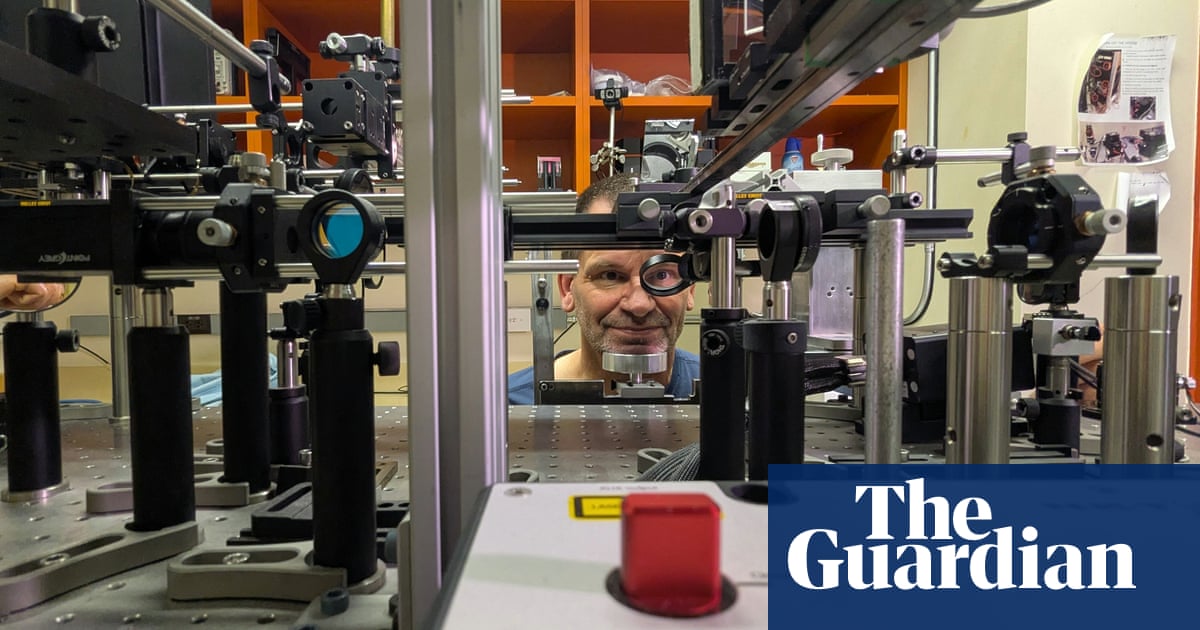After walking the Earth for a few hundred thousand years, humans might think they have seen it all. But not according to a team of scientists who claim to have experienced a colour no one has seen before.
The bold – and contested – assertion follows an experiment in which researchers in the US had laser pulses fired into their eyes. By stimulating individual cells in the retina, the laser pushed their perception beyond its natural limits, they say.
Their description of the colour is not too arresting – the five people who have seen it call it blue-green – but that, they say, does not fully capture the richness of the experience.
“We predicted from the beginning that it would look like an unprecedented colour signal but we didn’t know what the brain would do with it,” said Ren Ng, an electrical engineer at the University of California, Berkeley. “It was jaw-dropping. It’s incredibly saturated.”
The researchers shared an image of a turquoise square to give a sense of the colour, which they named olo, but stressed that the hue could only be experienced through laser manipulation of the retina.
“There is no way to convey that colour in an article or on a monitor,” said Austin Roorda, a vision scientist on the team. “The whole point is that this is not the colour we see, it’s just not. The colour we see is a version of it, but it absolutely pales by comparison with the experience of olo.”
Humans perceive the colours of the world when light falls on colour-sensitive cells called cones in the retina. There are three types of cones that are sensitive to long (L), medium (M) and short (S) wavelengths of light.
Natural light is a blend of multiple wavelengths that stimulate L, M and S cones to different extents. The variations are perceived as different colours. Red light primarily stimulates L cones, while blue light chiefly activates S cones. But M cones sit in the middle and there is no natural light that excites these alone.
The Berkeley team set out to overcome the limitation. They began by mapping a small part of a person’s retina to pinpoint the positions of their M cones. A laser is then used to scan the retina. When it comes to an M cone, after adjusting for movement of the eye, it fires a tiny pulse of light to stimulate the cell, before moving on to the next cone.
The result, published inScience Advances, is a patch of colour in the field of vision about twice the size of a full moon. The colour is beyond the natural range of the naked eye because the M cones are stimulated almost exclusively, a state natural light cannot achieve. The name olo comes from the binary 010, indicating that of the L, M and S cones, only the M cones are switched on.
The claim left one expert bemused. “It is not a new colour,” said John Barbur, a vision scientist at City St George’s, University of London. “It’s a more saturated green that can only be produced in a subject with normal red-green chromatic mechanism when the only input comes from M cones.” The work, he said, had “limited value”.
The researchers believe the tool, named Oz vision after the Emerald City in the L Frank Baum books, will help them probe basic science questions about how the brain creates visual perceptions of the world. But it may have other applications. Through bespoke stimulation of cells in the retina, researchers might learn more about colour blindness or diseases that affect vision such asretinitis pigmentosa.
Will the rest of the world get the chance to experience olo for themselves? “This is basic science,” said Ng. “We’re not going to see olo on any smartphone displays or any TVs any time soon. And this is very, very far beyond VR headset technology.”
